“If there is no difference, there is only indifference” said Louis Nizer
Customers may think the same when your products are not much different from the competition. Of course you can lower the price but this may start a price war.
Thousands of companies have faced a similar problem so let’s go back 40 years and move to the lecture halls of Harvard.
In the 80s Michael Porter, legendary professor at Harvard Business School, wanted to create a method for evaluating the attractiveness of a given industry.
After much analysis, he identified five factors. The more of them fit a particular industry, the harder it will be to generate solid margins there.
What are these factors?
- Every supplier has the same product.
- All suppliers have similar costs and access to similar technology.
- Customers are price sensitive.
- Customers have a broad knowledge of the market.
- Customers are able to change suppliers at virtually any time to get a better contract.

As you can see, having an identical product is considered a serious problem. However, some companies deal with this situation quite well. Most often in three ways.
Three standard methods of distinguishing an identical product on the market
Loyalty programs
The more customers buy, the better rewards or discounts they receive. An example is gas stations, where everyone has more or less the same gasoline. To compete, they have introduced loyalty cards that are then redeemable for rewards or meals.
In B2B, where the rewards for loyalty are attractive, this can help keep the best customers.
Bundling or selling sets
This concept became popular in the 1980s, when Taco Bell ran a campaign called “Taco for 59 cents.” Rival McDonald’s didn’t want to lower the price of hamburgers, so they combined a hamburger, fries and a drink into the now famous McMeal.
Instead of fighting a “Taco vs. Hamburger” war, which they could have lost, they started a “Taco vs. McMeal” war.
Focus on customers who need delivery or express service
When we want to order a pizza at 2pm, there’s plenty of choice of locations. But when we get hungry at 2am, there are so few pizzerias open that we can pay a lot of money for one. The same is true for print shops, computer services or factories that can make a project “yesterday”.
Loyalty programs, bundles and express services are not the only method of competing when your product is not much different from the competition.
What they all have in common, unfortunately, is that they have one fundamental flaw – they require a lot of interference with the business, which means that implementation can be difficult or time-consuming, especially in larger companies.
What is this interference?
- In the case of loyalty programs, margins are effected, which may not please the CFO.
- Bundling requires negotiations with other departments in the company, which may require diplomatic skills.
- Changing operating hours may mean modifying the structure of the company.
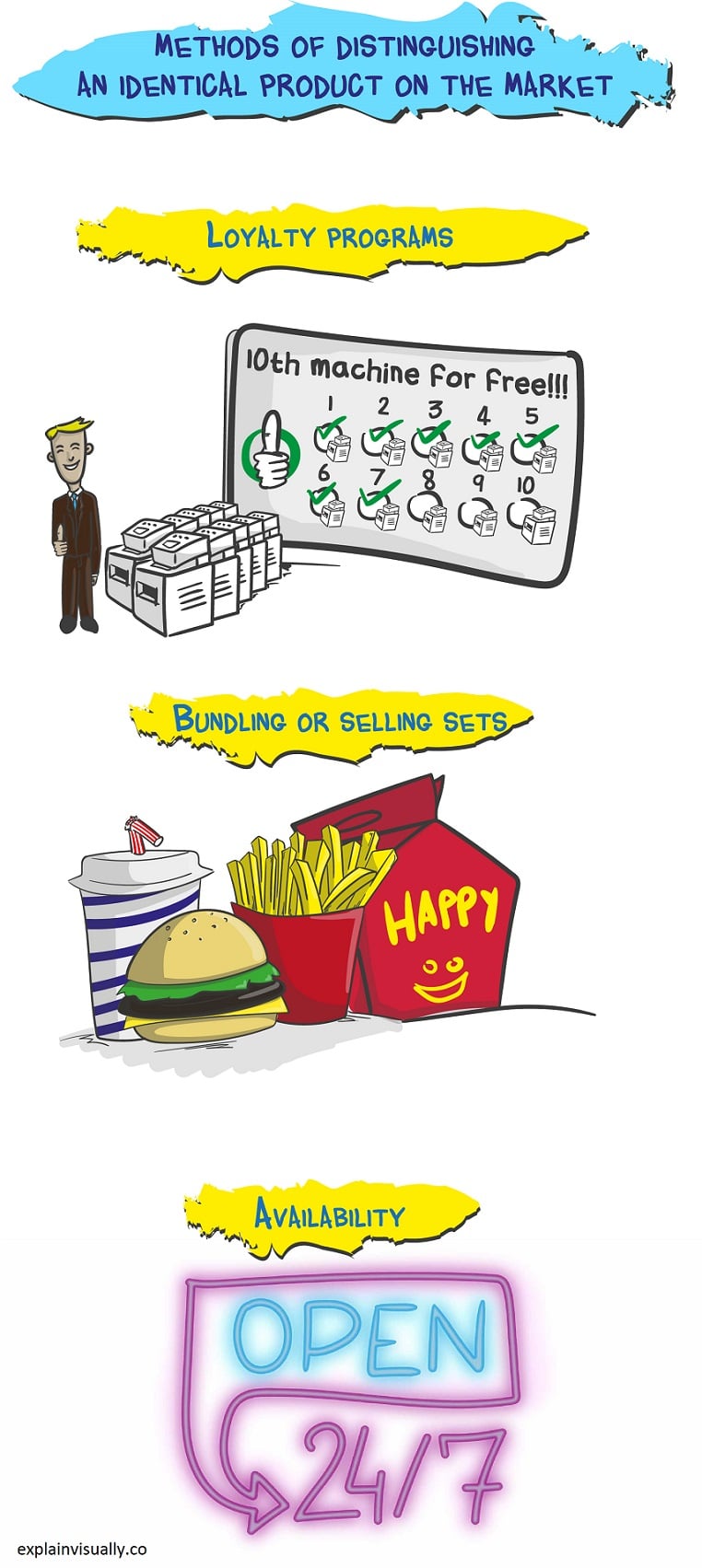
We will show you how to make an identical offer not identical anymore, without any interference with the product.
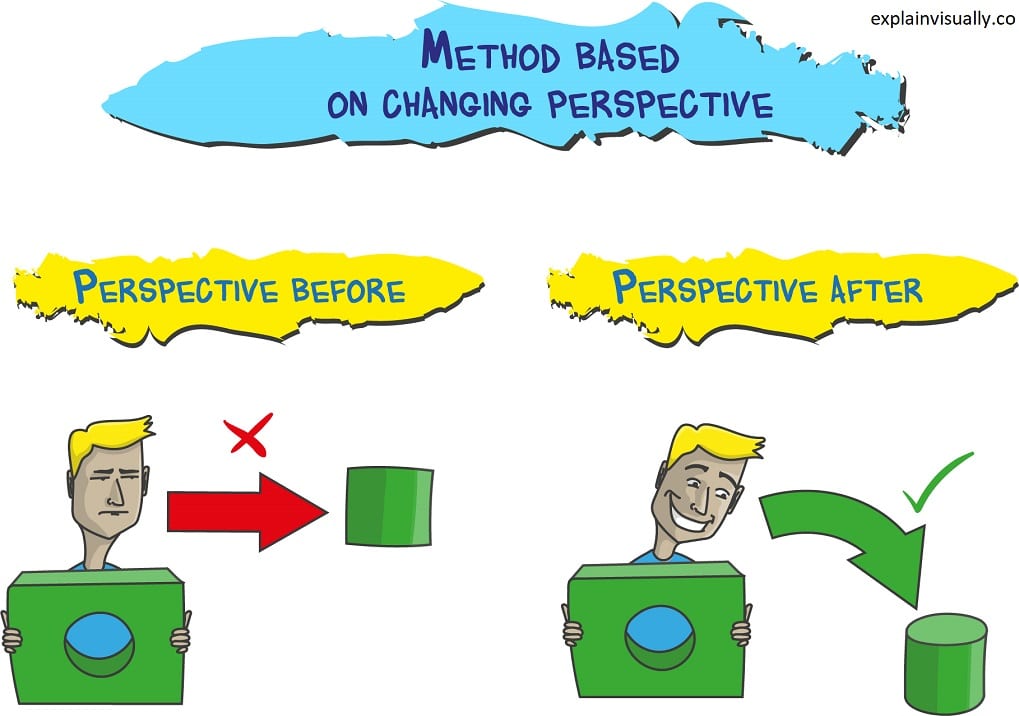
Competing with small things
Let’s look at auto mechanics.
Whether an auto mechanic is fixing a car in a Himalayan village or in the desert crossroads of Texas, the service looks more or less the same:
The car is dropped off. The mechanic diagnoses the problem and offers a solution. Once the quote is approved, the parts are ordered and installed and the car is ready for pick up.
But we all know that not all mechanical workshops are the same. In some places we may be taken advantage of. And in some… they serve us like in Mr. Andrew’s shop.
Mr. Andrew is an elderly man, who is always neatly dressed. He is a mechanic who started running his workshop in 1981 and after a few location changes his shop is now located next to the Warsaw printing school.
I met him a few months ago when my car started to fail. The lockdown was approaching and I did not want to be dependent on public transport, and I was looking for a good mechanic.
The steps in our interaction were:
I took my car to the workshop and Mr. Andrew diagnosed the situation. The next day, I received a proposed solution with estimated costs (lower than I expected) and the repair time (shorter than I expected).
Then received a phone call, in which Mr. Andrew said that he could replace a few small things and the car would run quieter. I agreed and Andrew purchased the parts and installed them in the car and checked that everything worked.
I picked up the car.
I looked in the trunk and saw that my scattered cables, gloves and boxes were neatly arranged. I looked in the cabin saw that it had been cleaned. I turned on the engine and it really was running quieter and the replaced brake pads were working.
I went down to the workshop and talked with Mr. Andrew.
“How much did it cost me to replace the parts that made the car quieter?”
“8 EUR, 3 EUR labor and 4 EUR parts” – and he pointed to the invoice.
On the invoice from the car parts distributor, I saw all the parts listed. I also received a separate invoice for the repair service, so I knew how much the installation and repairs cost.
For each part I was given the box in which it came, and the old part that had been replaced.
Is such transparency a standard among mechanics? Certainly not with the mechanics I had used before.
-
Why do companies like Intel, SHARP and Herbalife choose our animation studio?
-
How we can help you reach your goals?
It is the details that make one workshop better than others and it’s those details that can make you stand out and have a competitive advantage.
Let’s see how to put your differentiation into practice:
Step #1 Describe the features and benefits of your product on three levels
I’ve been working with B2B companies in various industries for many years and I make the bold claim that it’s likely that your offer has many valuable elements that you’re not talking about.
Because customers don’t know about some of your advantages, they’re less likely to decide to do business with you, resulting in your sales being lower than they could be.
Why does this happen? Partly because of the curse of knowledge – we assume our customers know as much about our products and services as we do and partly because we think too narrowly about our products and our offer.
Product core
Here we answer the question:
What does the customer get out of buying our product?
For example, a hammer allows you to drive nails. A CRM system helps to organize and monitor sales. Cloud services allow you to pay only for server usage.
This is quite clear for many companies.
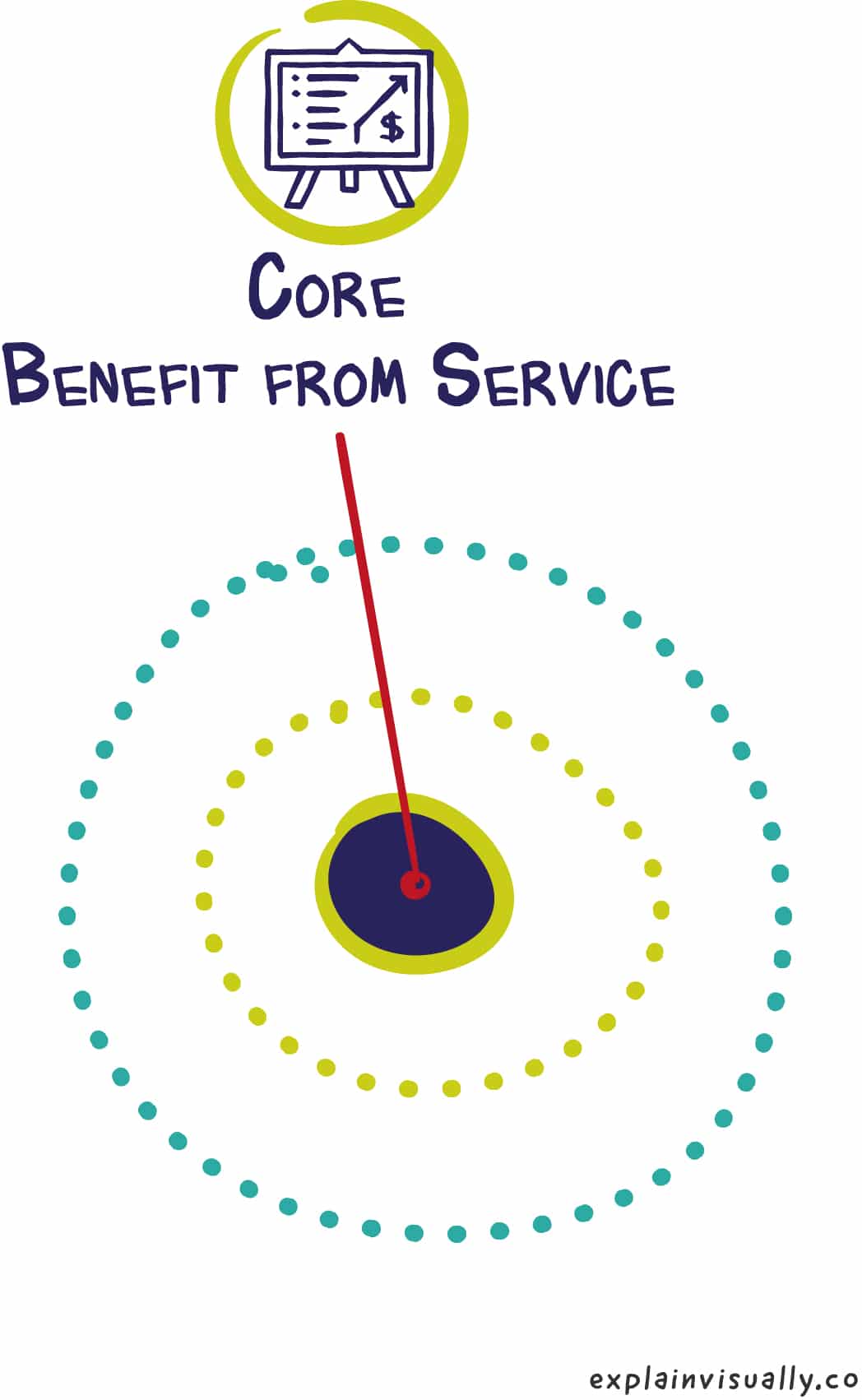
Product – measurable attributes
This is where we get into more detail.
What functionalities does your product have?
E.g. the ability to connect to a machine via Bluetooth.
How much can you use it before it wears out?
E.g. tires wear out after 100,000 km driven.
How efficient is it?
E.g. this modem can connect to the Internet at speeds up to 100Mbps.
What features does it have?
E.g. these screws have threads of 4mm diameter.
What quality is it?
E.g. these pallets are made of the highest quality wood.
There is usually no problem with talking about these basic product elements. Salespeople and marketers are well trained in this.
The problem comes when our product is similar to the competition in these areas. In the case of an auto repair shop, anyone can say they do “Good, fast and cheap work”. It’s not much different for industrial products.
What should we talk about then? How do we promote and sell our products?
Consider the slightly less obvious attributes of your product.
Product – subjective attributes
Not only measurable things matter.
These can also be important:
How is the product packaged?
E.g. smaller packaging – more products will fit in the warehouse. Anyone who has transported an IKEA closet knows this!
How easy is the product to use?
E.g. if the product or application is easier to use, then less time (and money) is needed to train employees and this is a concrete and quantifiable benefit.
In what form is it?
E.g. is CRM in the form of Excel, a program installed on the computer, or a SaaS product that is launched from the browser? This matters.
What style is it in?
E.g. does the car in the company fleet look like a Fiat Multipla or a Volkswagen Passat? That can make a difference to the people who will be driving it.
But these are not all the features. There is also the whole environment of your product.
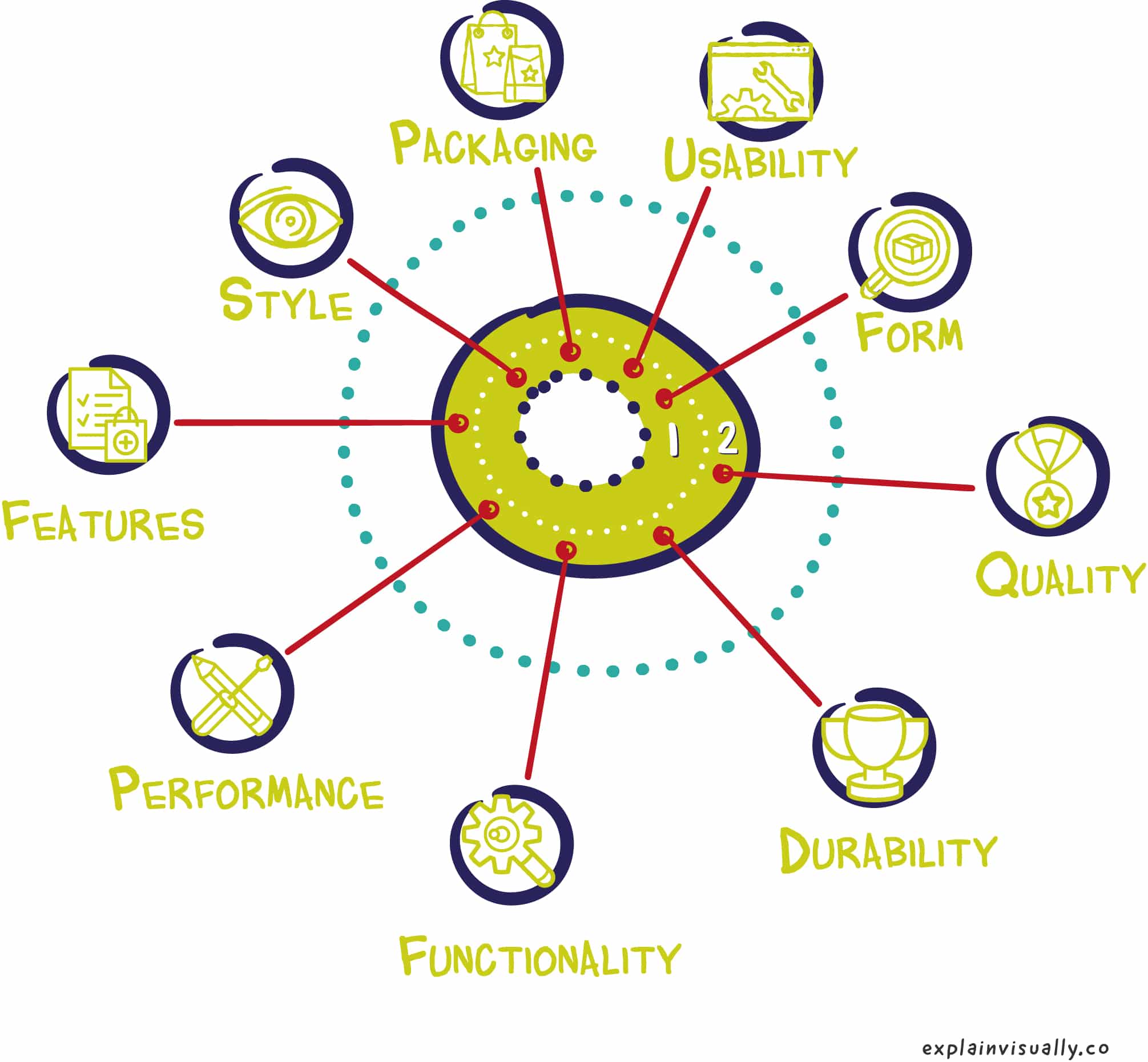
The environment of your product
Here are all the services surrounding your product.
What are the warranty terms like?
E.g. is it one year, two years or five years and what are the conditions? DELL can send a courier to a customer in case of a broken computer and send back a repaired computer within two days.
What are the financing options?
E.g. do you have short or long payment terms? Is there an option to pay in installments? Or maybe – like Volkswagen or Toyota – you cooperate with a bank which is able to finance the purchase?
How strong is your brand?
E.g. if a customer chooses your product, will they risk their reputation? Or is it a market standard like Microsoft or IBM?
What kind of after-sales service do you have?
E.g. can the customer count on product training? Does your support respond quickly to requests? Do you have a loyalty program?
What kind of delivery options do you have?
E.g. do you deliver at the price and time the customer expects?
What installation options do you have?
E.g. will someone from your company come to the customer and help them with the installation? Or is the product so easy to install that the customer can assemble it themselves?
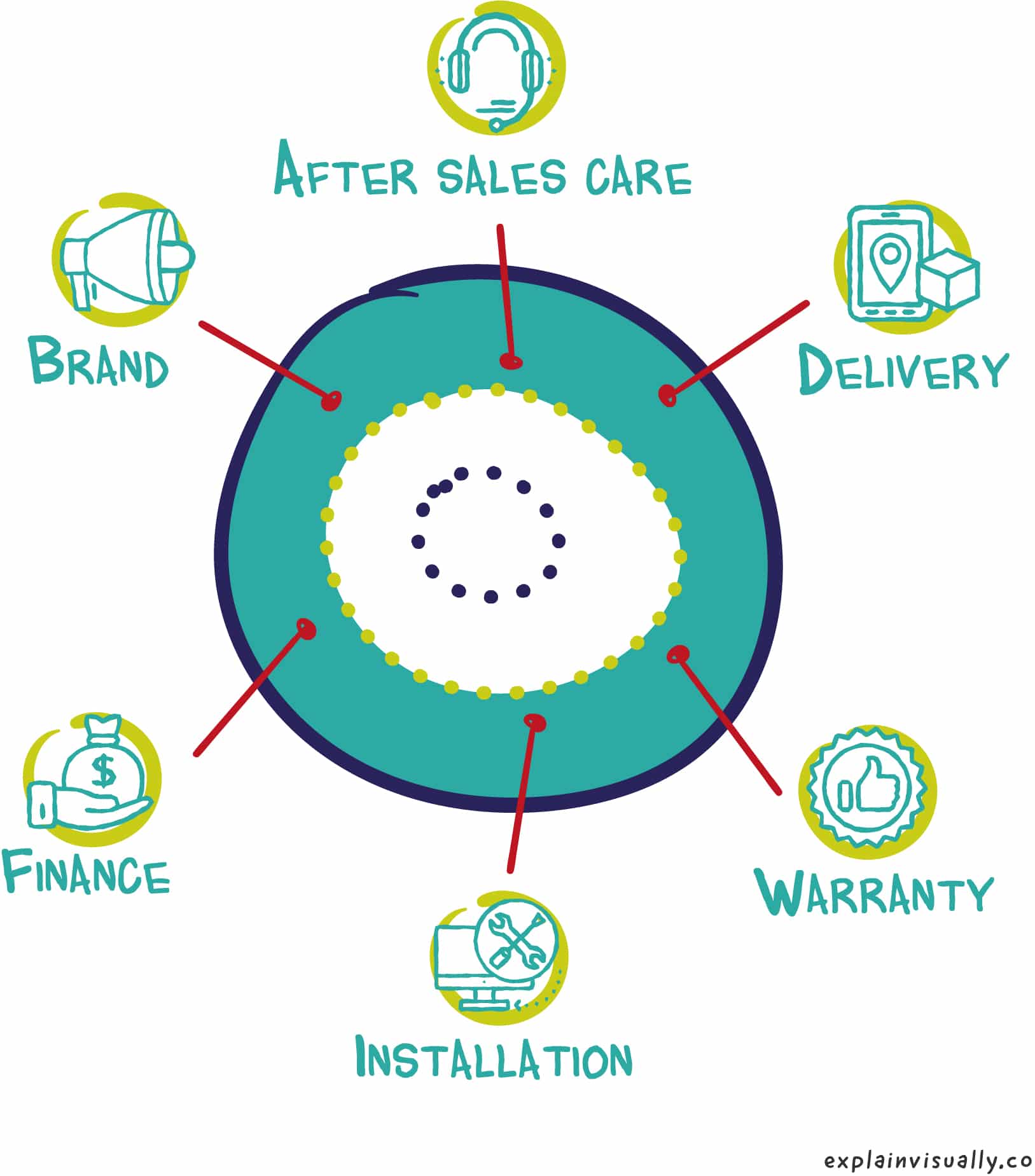
So we have at least 15 dimensions to describe our product. It’s easy to forget these if we don’t consciously do this exercise.

Step #2: How do we know which features to bet on? Ask
If we have all the 15 features, new clients will probably come to the company but not all those traits will interest your customer.
There is a temptation to overload the customer with information, especially in technology, where there is a multitude of features of the product.
So what to do?
You can call the customer and say:
“We are thinking about changes in the company and what to bet on and we are asking our best customers why they chose us. Could we talk for a minute?”.
We might then hear in response:
“I hope Ms. Natalie is not leaving!”.
At least that is what a CEO of a printing company heard from one of his clients when we suggested him asking this question.
It turned out that Ms. Natalie was adored by customers for how helpful she was. When a client heard about the changes in the company, he was concerned that Ms. Natalie might leave.
The CEO talked with some more customers and most resulted in the same comments:
– “Customer service is great.”
– “You solve out problems.”
– “I can give you a project and not stress about it.”
With so many customers providing feedback, the answer to the question of how to sell becomes simpler – we know that customer service is an important selling point on the website, in ads and in conversations with customers.
So the CEO and I moved on to the next step, which is to see if their communications were putting the emphasis on the key points.
And this is where you might be surprised.
Check if your communication is consistent with your product features and customer needs.
There was hardly a word about customer service on the printing company’s website. They were not communicating to customers about what they were most interested in.
As Javier Sanchez Lamelas, Coca-Cola’s global marketing chief, once told me:
“A real brand means a promise kept.”
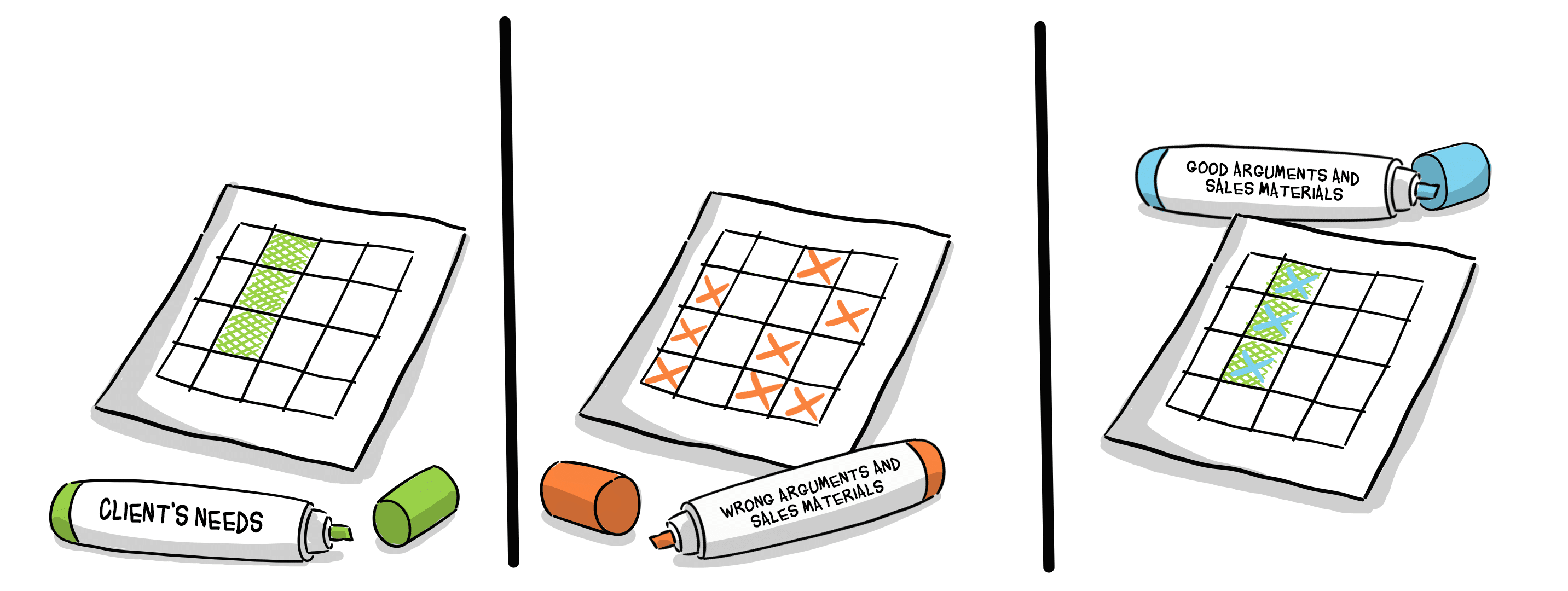
If the client identifies for you the items where their needs are, it will be easier for you to meet their needs.
If you would like to receive sample questions to ask your customers, fill out the newsletter box in this article and we’ll send them to you by email.
This is a low-key minimalist approach, and it is best to create a full Buyer Persona. However, with this simplification you can call 10 customers this week and collect insights about their preferences.
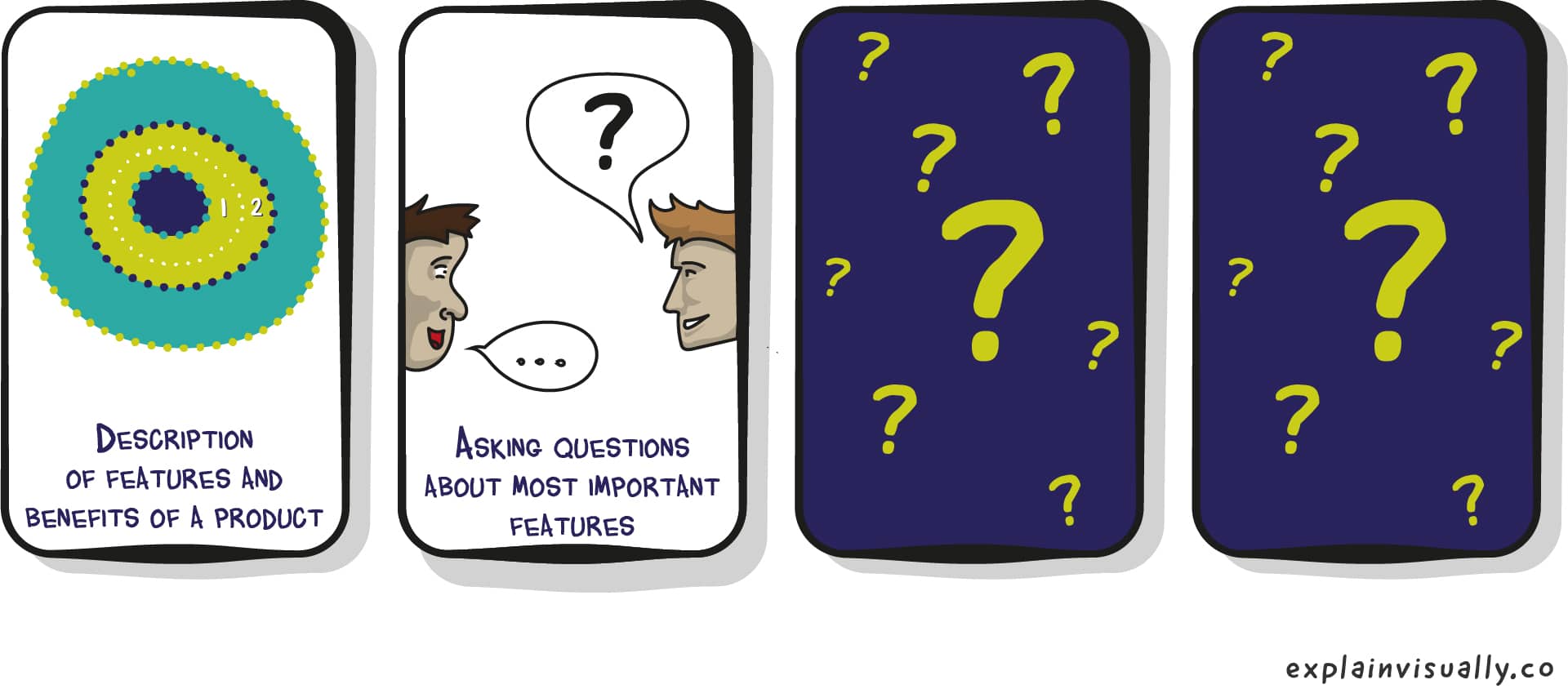
Step #3 What if customers mention many features in interviews? Divide them
This is where a legendary Japanese professor of quality management from the University of Tokyo, Noriaki Kano, comes to our aid.
He divided product features into five categories.
1) Must-Have
These are requirements that are so obvious to the customer that they don’t even mention them.
Therefore, if we satisfy them, the customer will be in a neutral state – they will not appreciate our effort. Unmet Must-Have requirements will, in turn, make the customer very dissatisfied.
Examples of Must-Have:
– receiving the shipment on time,
– that sales results can be analyzed in the CRM,
– that the machine will run smoothly,
– that the car will run after repairs have been made.
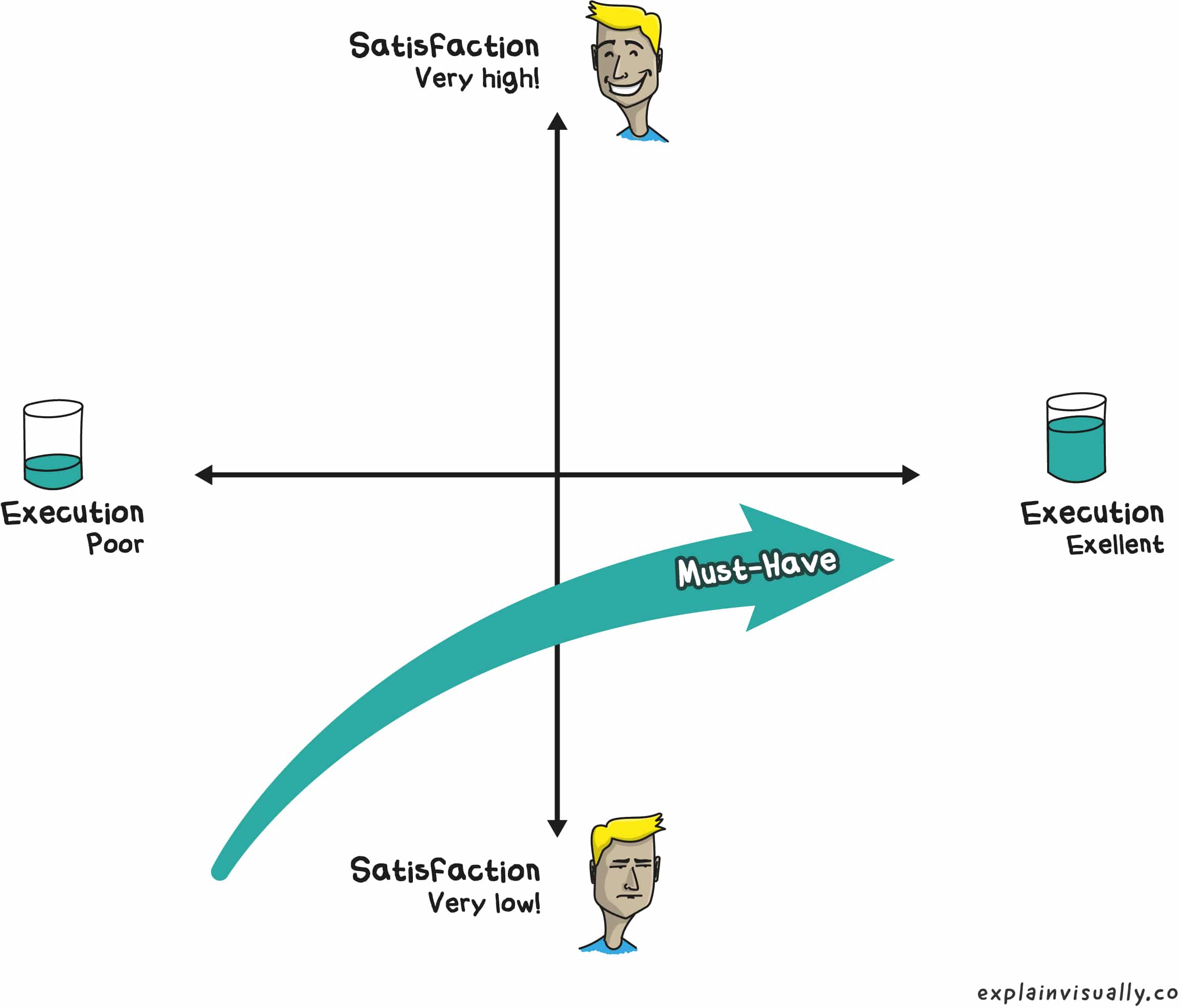
2) One-Dimensional, Want-To-Have Features
These requirements are not as obvious as Must-Be.
If we satisfy these requirements, we make our customer happy. However, if we don’t, we will upset the customer.
Examples of Want-To-Have features:
– the ability to track the shipment.
– convenient use of the CRM.
– training on how to use the machine.
– car repairs at a reasonable price.
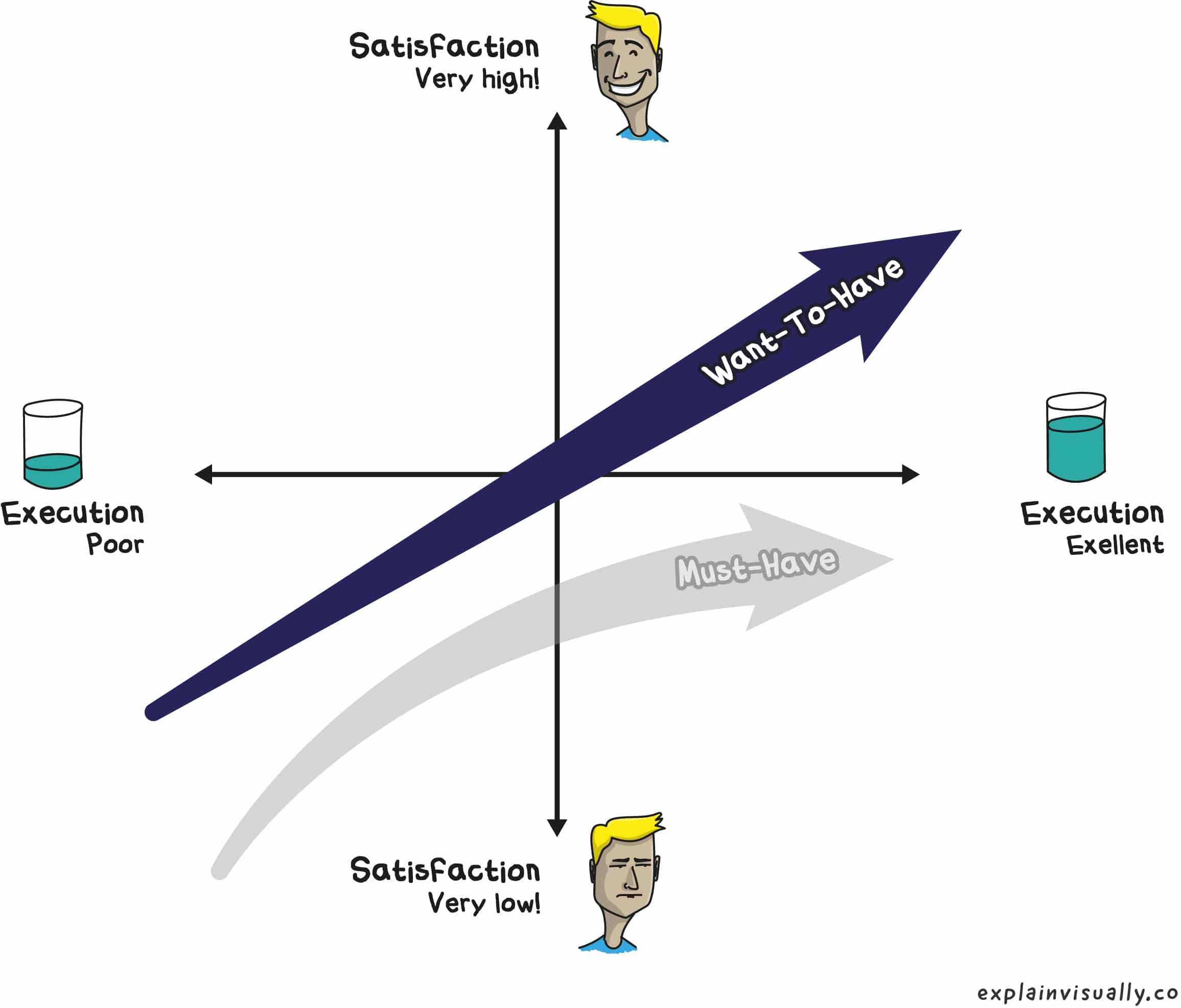
3) Attractive features, Nice-To-Have
This is where we get out of the requirements stage. Nice-To-Have elements are often bonus features that the customer does not expect.
As the customer does not expect these features, their absence does not affect customer satisfaction.
Examples of Nice-To-Have Features:
– a friendly courier who will make your day better with their positive energy,
– possibility of CRM integration with Slack or Teams,
– post-training consultations for factory employees to help them implement the knowledge they have acquired,
– clear invoices and the ability to pay for car repairs by bank transfer.
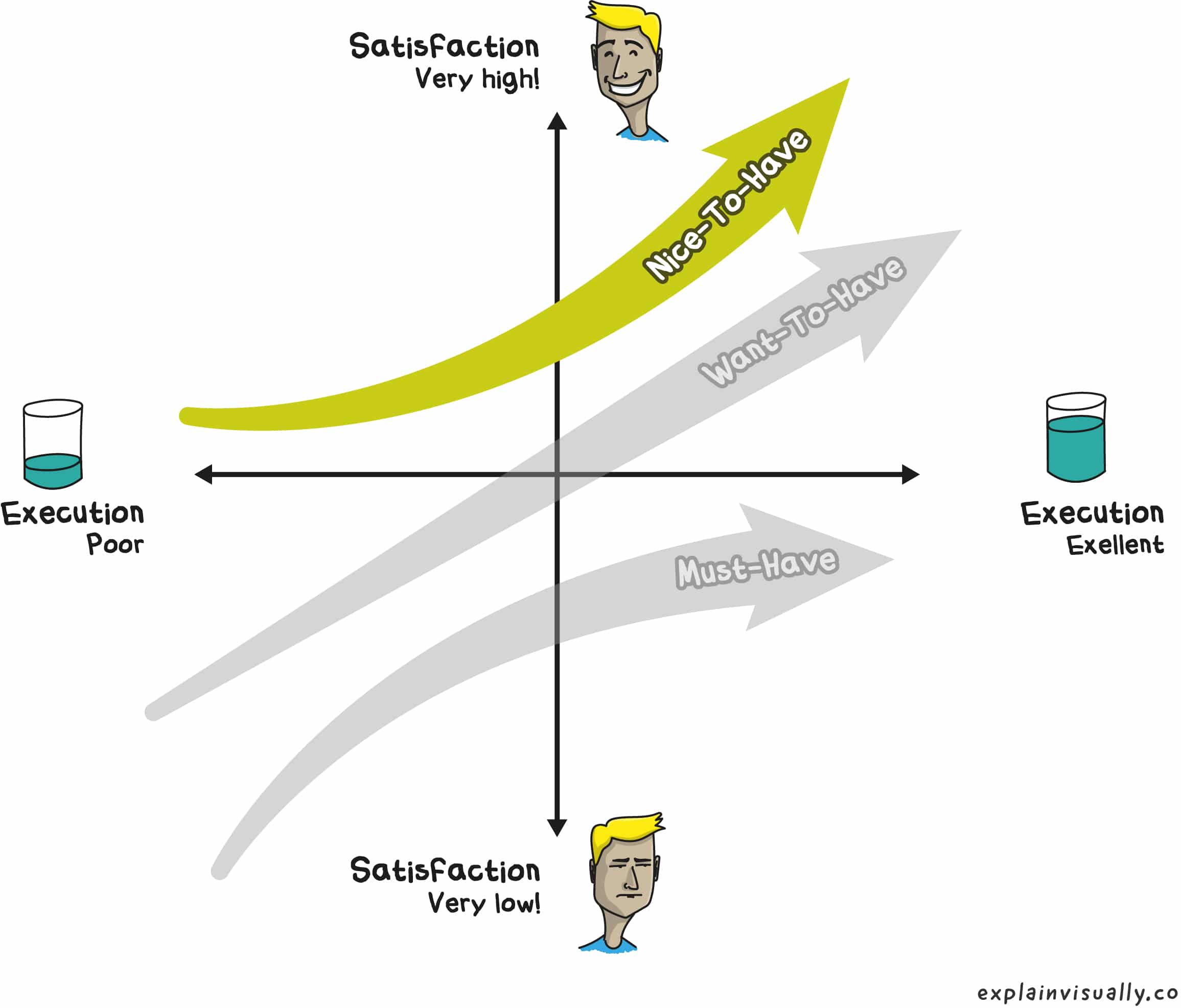
4) Don’t-Care-If-Have
These are the kind of features that aren’t worth investing in because they don’t affect customer satisfaction. If we know what these features are, we can save the company from going down a blind alley and investing in something that won’t work.
Examples of Indifferent Features:
– what kind of car the company will use to deliver your package,
– whether you will have integration with a not very popular application,
– what color the machine is,
– what tools the mechanic uses.
These features don’t effect customer satisfaction in any way.
5) Inverse, Better-Not-Have
These are features whose presence the customer prefers not to have.
Examples of Better-Not-Have Features:
– Having to pay by wire transfer for shipping.
– Too many functionalities in CRM which makes it confusing for salespeople to use.
– Overly modern interface that is difficult to use for older employees.
– Assuming that the customer knows the cost of the repair without having a conversation about the cost.
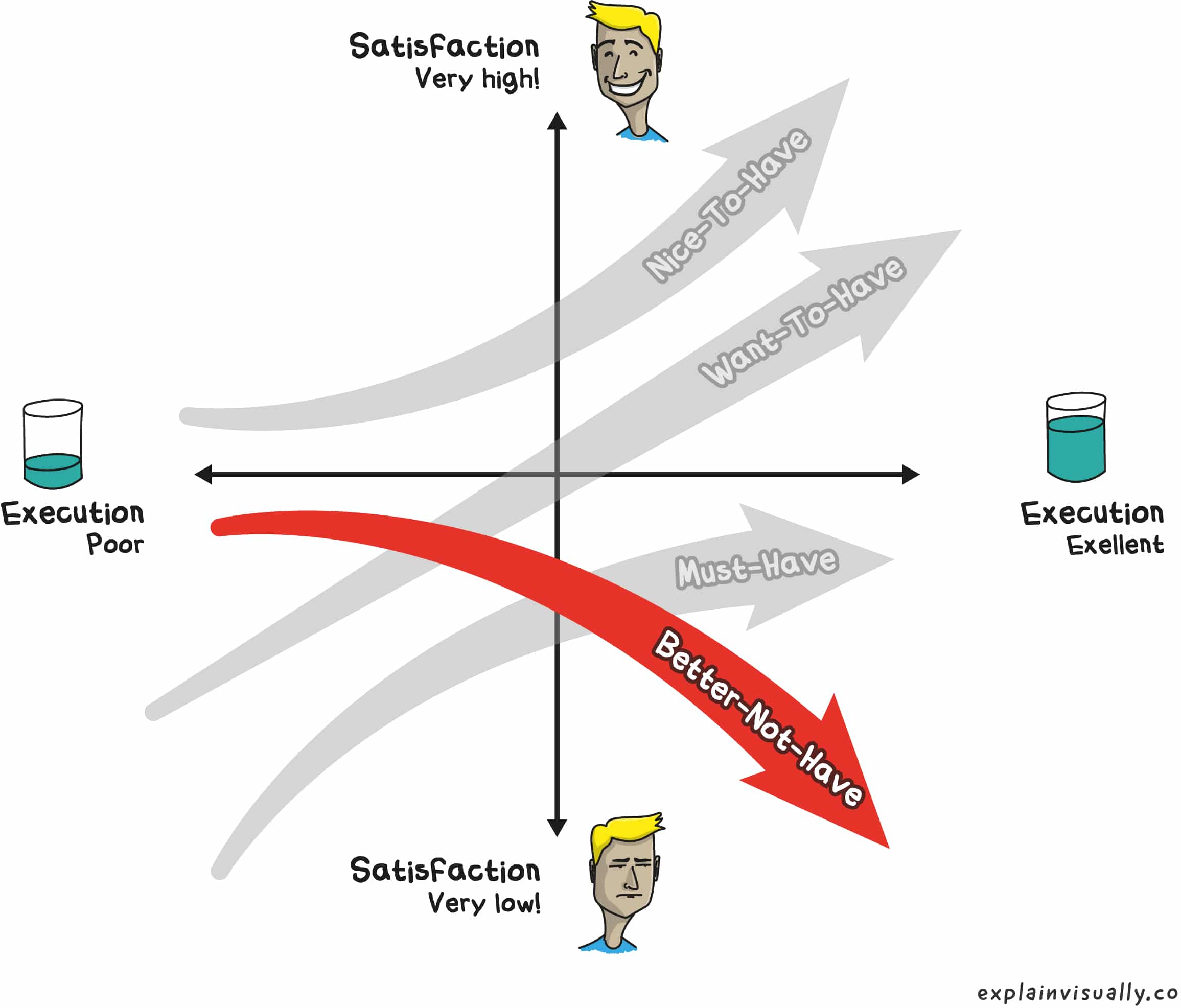
-
Why do companies like Intel, SHARP and Herbalife choose our animation studio?
-
How we can help you reach your goals?
When you start asking these questions, you’ll probably find that the answers may vary between customer segments.
Those willing to spend more will typically have more expansive requirements than those looking for budget options.
In a cheap hotel, your Must-Have is a clean bed and bathroom. The Nice-To-Have is that you will be served breakfast for free.
In the most luxurious hotel your Must-Have might be fresh fruit in the room, a concierge and a driver. And Nice-To-Have becomes a helicopter with a pilot.
Similarly in B2B.
A smaller company will be happy to be invited to a conference and it will be a Nice-To-Have for them, while a corporate client may be bored with such an invitation.
The market is continually evolving -15 years ago, no one expected real-time shipment tracking, software integration with other applications, or machines connecting to the rest of the system.
Today, this is the standard. Something that was once Nice-To-Have or Want-To-Have is now a Must-Have.
Once you’ve collected the features (Step 1), verified them with the customer (Step 2), and sorted them out (Step 3), then you can change your sales narrative (Step 4).
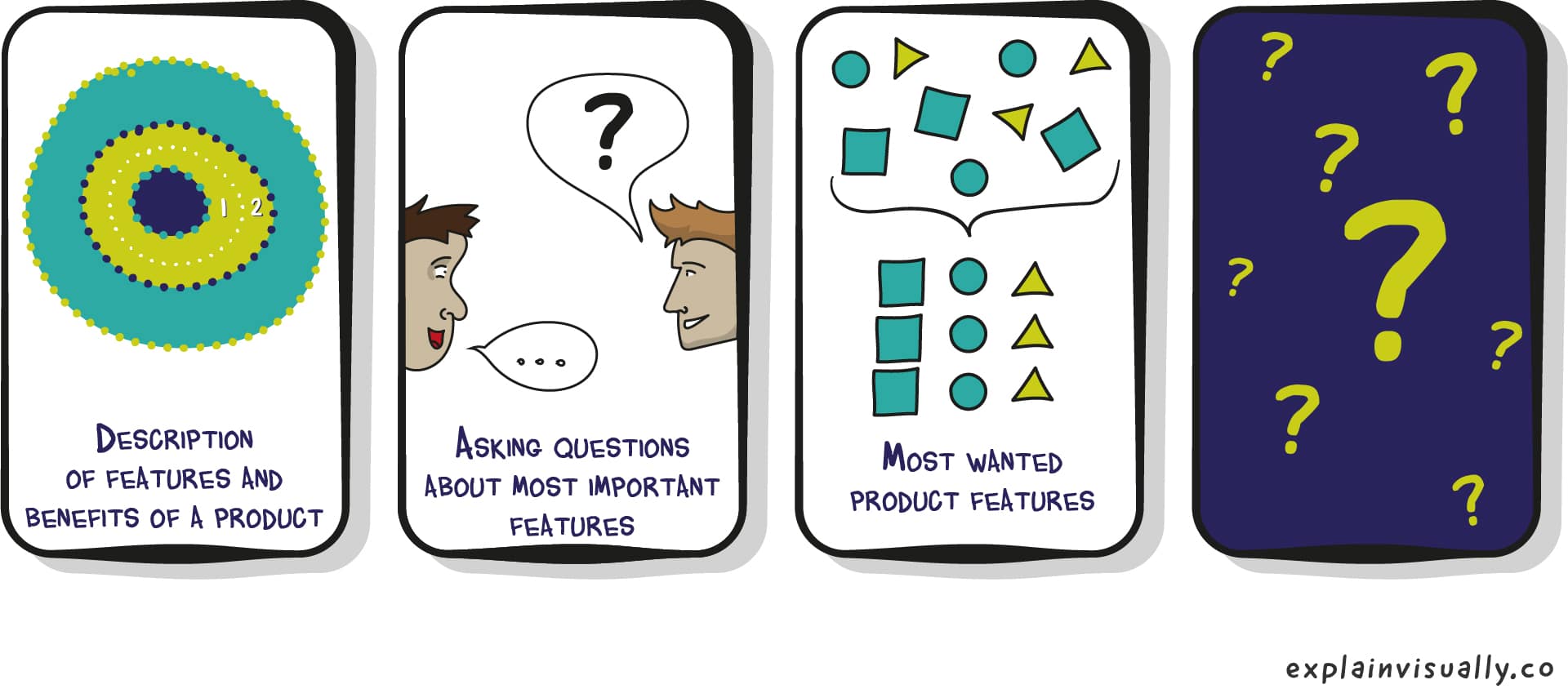
Step #4 Change the sales narrative
There are several options and each requires modifying your marketing and sales narrative.
Emphasize other features of your products in your communications
Let’s go back to our auto mechanic example:
Every mechanic changes parts and repairs cars (Must-Have). But anyone who has had a car repaired knows that honesty between workshops can vary. Therefore, the fact that you won’t have to overpay is – unfortunately – only a Want-To-Have.
But how many mechanics do you know who promote themselves by mentioning their honesty and guarantee of customer satisfaction? Probably not many. Opinions like “This one does a good job and doesn’t rip you off…” tend to be only spread by word of mouth.
And if even mechanics want to bet on it, they may just say “We’re honest”, which doesn’t sound very convincing. Much better is the example of Mr. Andrew’s slogan: “You have insight in the cost of each installed part and labor hours”.
If Mr. Andrew mentioned this on his website or in his advertisements, he would have many more customers.
This application is obviously not limited to Mr. Andrew.
Let’s assume that we are a software house.
They all have more or less the same service – they write software in many programming languages. If the marketing of such a company is limited to saying “we write good software”, it means that it is limited to a Must-Have for the customer.
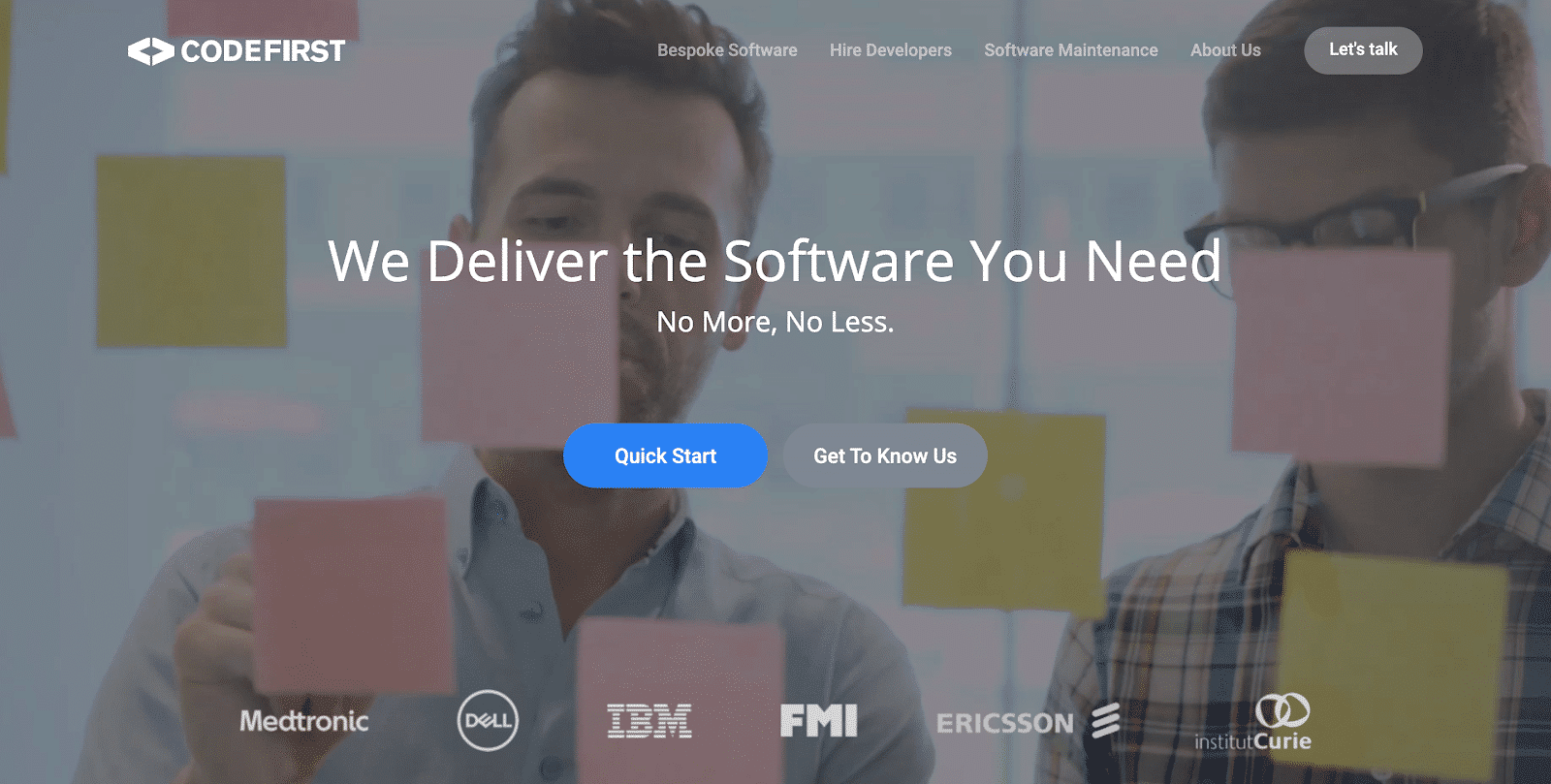
Such a message does not say much. After all, every software house writes software.
However, the competition here is more advanced than among car mechanics. Most of the top companies have references, case studies or good content marketing. And they know how to convince clients that they “write good software”.
So if all software houses look alike, then betting on the Must-Have does not make any difference to the competition.
You have to find the Want-To-Have’s and Nice-To-Have’s for your customers.
A Want-To-Have could be, for example, the ability to plan work in such a way as to stick to a budget and schedule.
A Nice-To-Have is a talented and friendly team that you can get to know through a YouTube channel.
Knowing how customers perceive the features of your products makes the work of marketing and sales much easier.
It makes it much easier to create campaigns, marketing materials and sales conversations.
And it looks like this:
Must-Have:
Suppose you know that a customer’s Must-Have is the timely delivery of a package. You can then behave like FedEx did in the 1970s when it used the slogan “When it absolutely, positively has to be there overnight”.
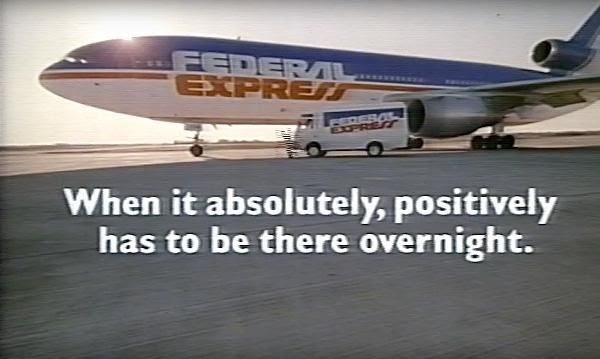
By doing so, FedEx subtly implied that it was a sure choice, while other companies might struggle to deliver on time, i.e., to satisfy the customer’s Must-Have.
Want-To-Have:
If you know that the customer’s Want-To-Have is the brand and the resulting risk assessment, then you can go with slogans similar to “No one has ever been fired for buying IBM”.
Then the client’s employees, caring about their jobs, will give your company extra points.
If the customer’s Want-To-Have is to use software easily, then Pipedrive, one of the world’s most popular CRMs, can be an inspiration.
Because the customer know how chaotic and phone-filled a salesperson’s life can be, show that your CRM has “features that help you focus”.
Sometimes your customer’s Want-To-Have is the style of your product. A good example is Pacor, an American truck manufacturer,who has made sure their style maches their customers’ taste.
By emphasizing the typically American design of their vehicles, it has made US-based drivers push their fleet managers to buy their trucks.
Nice-To-Have:
You can also work on Nice-To-Have and positive surprises in customer service. Here our local champion is Brand24 customer service, which helped customers book flights to Tunisia or find a good cinema screening in Lagos, Nigeria.
Educating customers on the consequences of having and not having certain features of products
Sometimes a customer – just like a driver who has their car repaired – is not aware of all the costs or risks that may be incurred, so they need to be made aware.
For example, a customer may think that a simple CRM service is Nice-To-Have.
But when the customer realizes that they need to train 100 salespeople and each training costs both money and, the customer may change their perspective.
Something that was Nice-To-Have will suddenly become a Must-Have. And if your CRM is easy to use, and the competitors is not, you are at an advantage.
Similarly with after-sales service. It is easy to underestimate it and to think that “everyone gives a guarantee”.
In an interview with Ela Pega, who for more than 20 years managed the marketing of companies such as Michelin, Schneider Electric and Saint-Gobain, said:
“(…) We all have household appliances in our homes – washing machines, refrigerators. When something happens to them, we don’t like it, we get upset.
This is the moment when we check the manufacturer: what they will do, how quickly they will react, whether we can call their hotline, whether the fitter will come the next day, and whether they will adjust to my schedule or I will have to adjust to their schedule. And finally, how much will I pay, will it be under warranty.”
If your company has a great service or YouTube videos on how to operate or repair the equipment, this is a definite advantage to communicate to your customers.
When in B2B a broken machine stops production, the losses can go into the thousands or millions. If you can quickly fix the situation, and the competition cannot, it is a tangible value for the customer, for which the customer will pay a premium.
Wise market education through marketing and sales can pay off.
Addressing a different customer segment
“One man’s trash is another man’s treasure”.
The most colorful example of this phenomenon was the flood of cheap Chinese clothes and electronics into Poland in the 1990s. Something that most French or English people would never buy, was accepted with open arms in Poland.
This phenomenon does not only concern low quality products. It is beautifully illustrated by the story of WATCOM, a startup that created an alternative to Excel.
Initially, sales were poor. At some point, it turned out that their product was loved by salespeople because it could be installed on mobile and this allowed salespeople to upload data while in the field.
After focusing on this customer segment, revenues grew rapidly to reach over a billion dollars at one point. The startup was later bought by Sybase.
Where to look for the most obvious customer segment changes?
SMEs and corporations
SME customers will enjoy service standards that corporations may shrug their shoulders at. On the other hand, corporations may appreciate the agility and speed that comes naturally to SMEs.
International expansion
There is a reason why this move was chosen by most Polish software houses. Their rates are much more attractive for customers from England or Germany than from Poland. During a pandemic, it is also important for manufacturing companies to maintain a steady supply chain.
Specialization
Many companies provide cloud implementation services. However, if you are a bank and you come across a company realizing “cloud implementations for banks”, knowing the specificity of regulations of the SEC and having five large banks in its customer portfolio, you will likely be more willing to work with them, than with someone who simply says that they know everything about cloud.
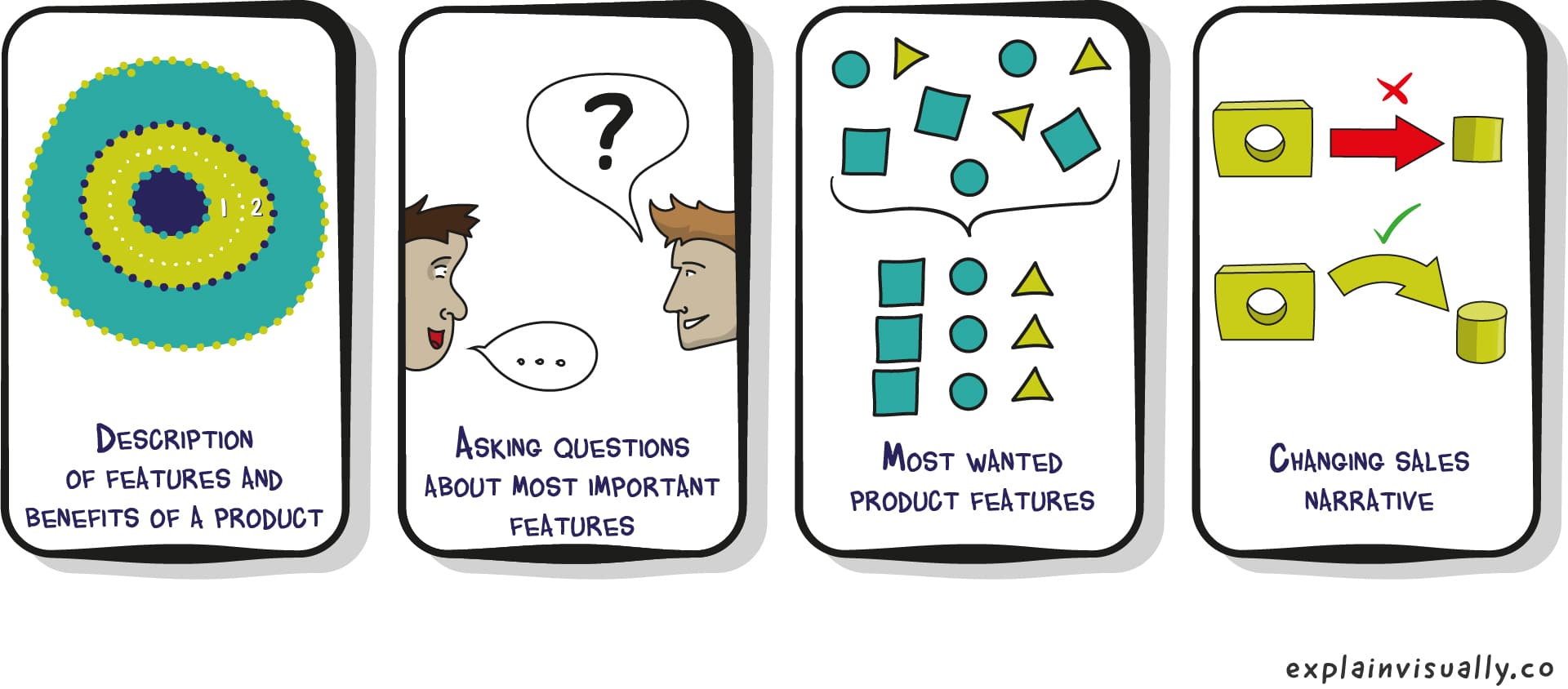
Of course, these are not all the ways – it’s a good idea to talk to customers who really value your product. After such discussions, you will usually have a few hypotheses about the directions to take.
That’s why it is so important in a marketing and sales strategy to understand your customers. If the opportunities to influence the product are limited – as they often are in corporations and large companies – then your role is to sell it to those that value it the most.
Summary
I hope this material has encouraged you to think more broadly about your product.
Remember:
#1 Consider the features of your product
Don’t just think about the basic dimensions, but all benefits, such as packaging, ergonomics, warranty and serviceability.
This step will likely provide you with many ideas for developing your marketing and sales.
#2 Ask the customer what is most important to them
It is best to ask people who have already bought from you. This will make the answers more reliable. Especially if they have simmilar observations like in the “customer service” story we mentioned above.
At this stage, you will likely have many insights and ideas on how to improve your marketing and sales.
#3 Organize customer responses into five dimensions
If there are a lot of responses – or ideas in stage #1 and #2 – it’s a good idea to organize them into five dimensions:
Must-Have/Want-To-Have/Nice-To-Have/Not-Care-To-Have/Don’t-Want-To-Have.
This will help you to navigate your product communications and will clarify your product’s features and benefits.
#4 Modify your sales narrative or target audience
Use all the knowledge from Stage #1-3 to tell a different story about your product or address different customers.
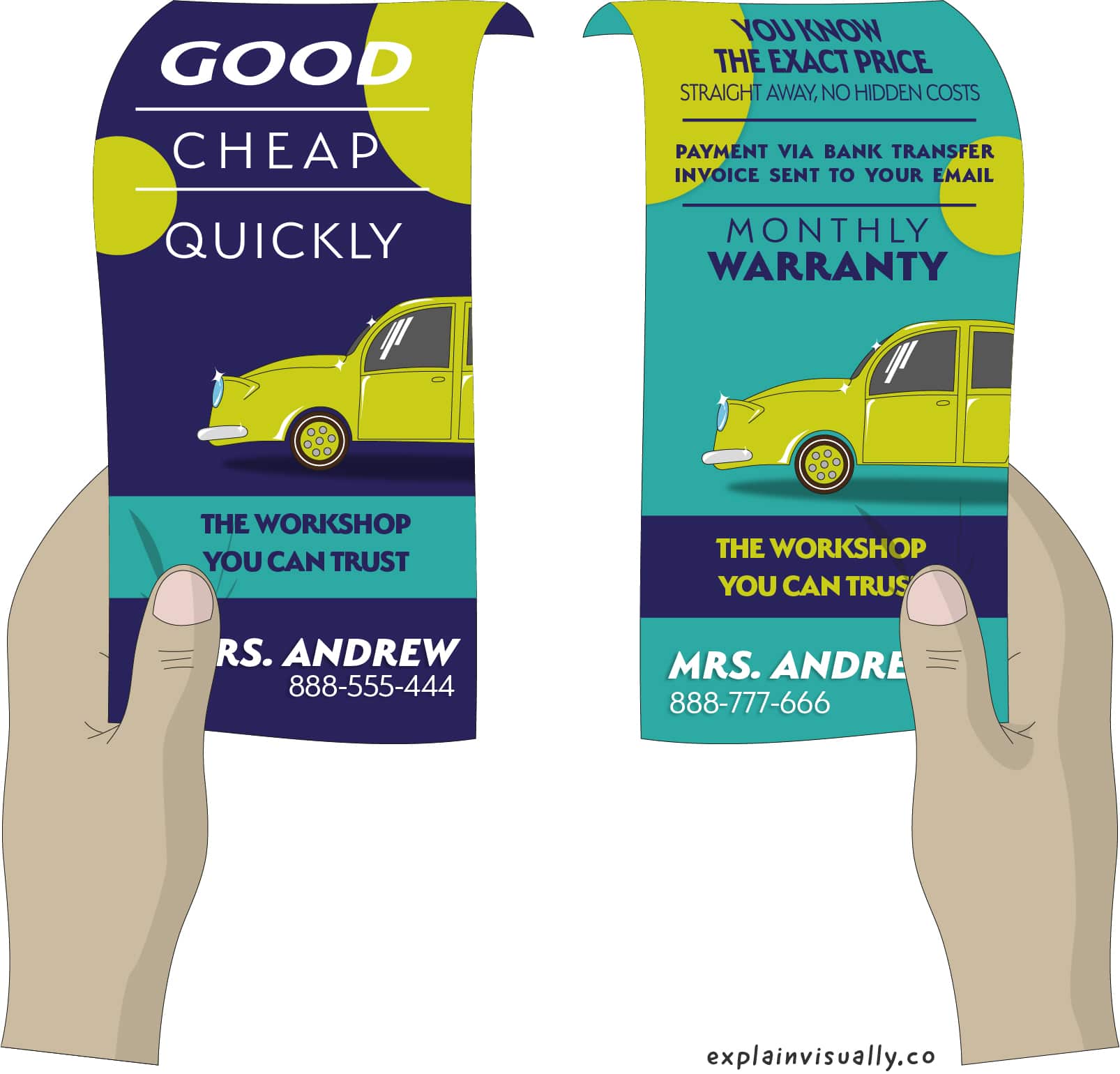
-
Why do companies like Intel, SHARP and Herbalife choose our animation studio?
-
How we can help you reach your goals?

He has studied psychology at the University of Warsaw, and business at Warsaw School of Economics, as well as at University of Cambridge Judge Business School. During his studies, he has researched how people think when they are overwhelmed by information.
It has inspired him to focus on communication that explains complex subjects in a simple way. In Explain Visually, he has lead projects for companies such as IKEA, Carlsberg, Pratt & Whitney, Orange, and Pfizer. Fan of rational, science-based approach, and building marketing and sales on robust fundamentals.

